Did You Know the M14 Did This?
May 24th, 2022
6 minute read
Long after its career as the U.S. Army’s primary battle rifle ended, the M14 rifle continues to serve America, even on the high seas. On board U.S. Navy vessels operating around the world, the M14 has performed several essential functions, not the least of these is “line-throwing”. Now, 50 years later, the M14 is still shooting at sea, although rarely in anger.
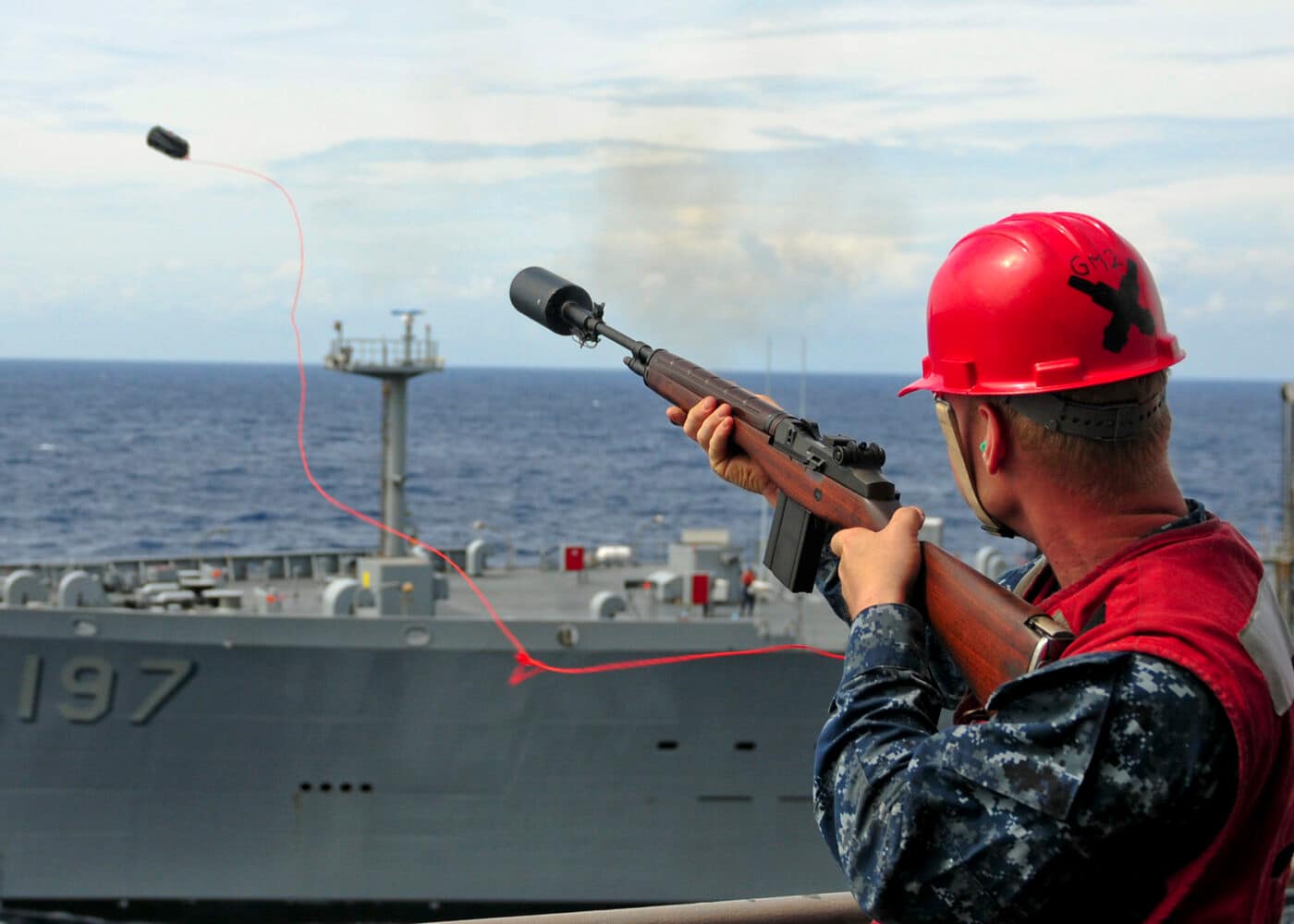
UNREP
In the U.S. Navy, underway replenishment (UNREP) is the primary way of transferring fuel, supplies, parts and even personnel from one ship to another while both are underway. The Navy perfected the practice during World War II, allowing entire battle groups to remain at sea for extended periods of time. UNREP is one of those unique capabilities that builds a war-winning strategic advantage.
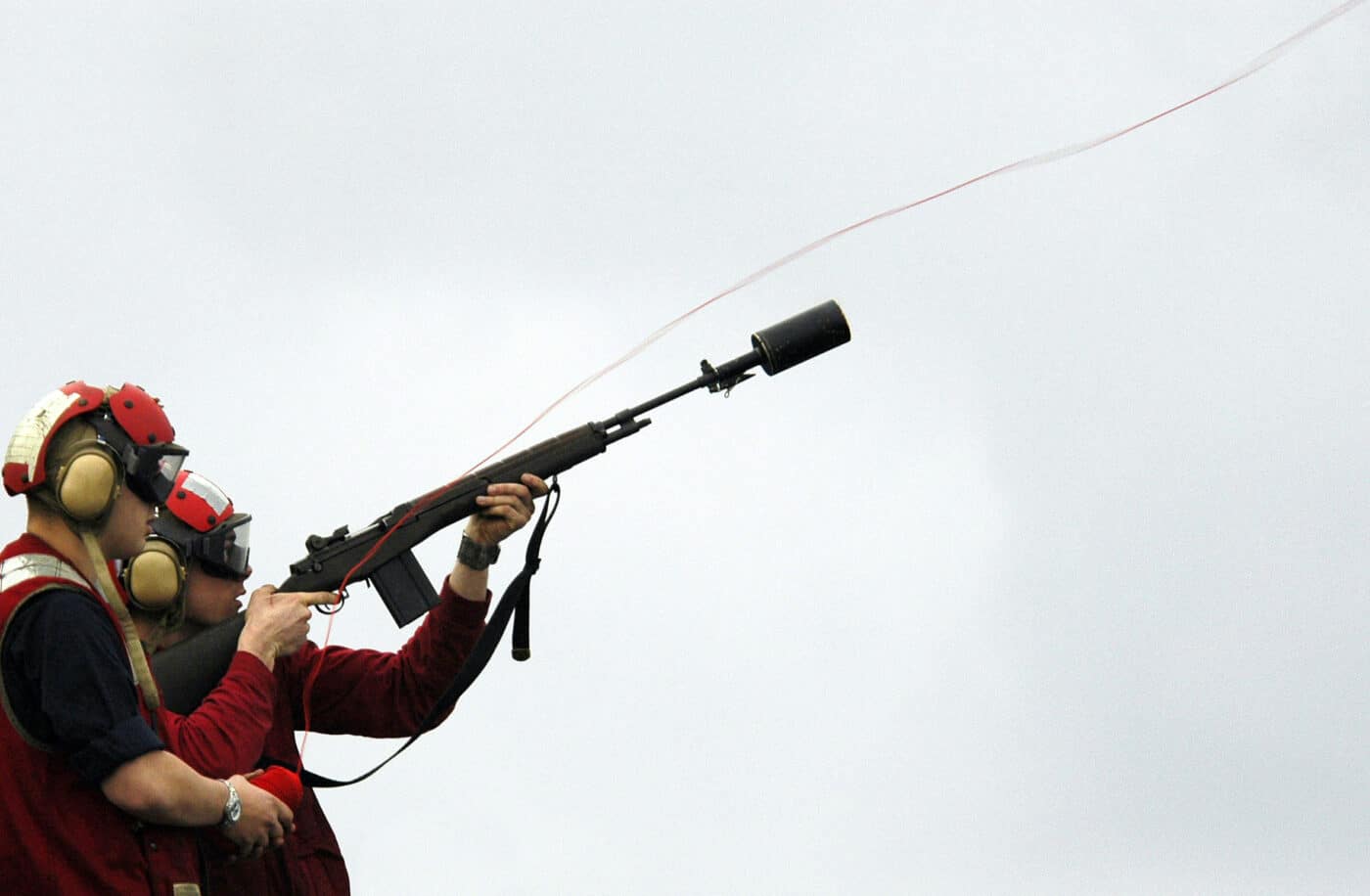
To get the process started, the ships maneuver into position, matching course and speed, side-by-side. That sounds easy enough at first, until the reality of the undulating ocean waves sinks in. Mother Nature is often downright uncooperative. Once the ships are aligned, the M14 comes into play, and the Line Gunner is on deck.
The Mk 87 Mod 1 Line Throwing Kit
For line-throwing operations, a standard M14 rifle is equipped with the Mk 87 Line Throwing Kit. The Mk 87 is similar to earlier grenade launching cup-style dischargers. The short cylindrical steel tube is approximately 8.5″ long and 2.75″ in diameter (1″ at the connecting end). The Mk 87 slides over the M14’s flash suppressor and is fastened to the rifle by a latch and a wire loop over the bayonet lug. A safety retaining pin fits through the latch and locks the Mk 87 to the M14.
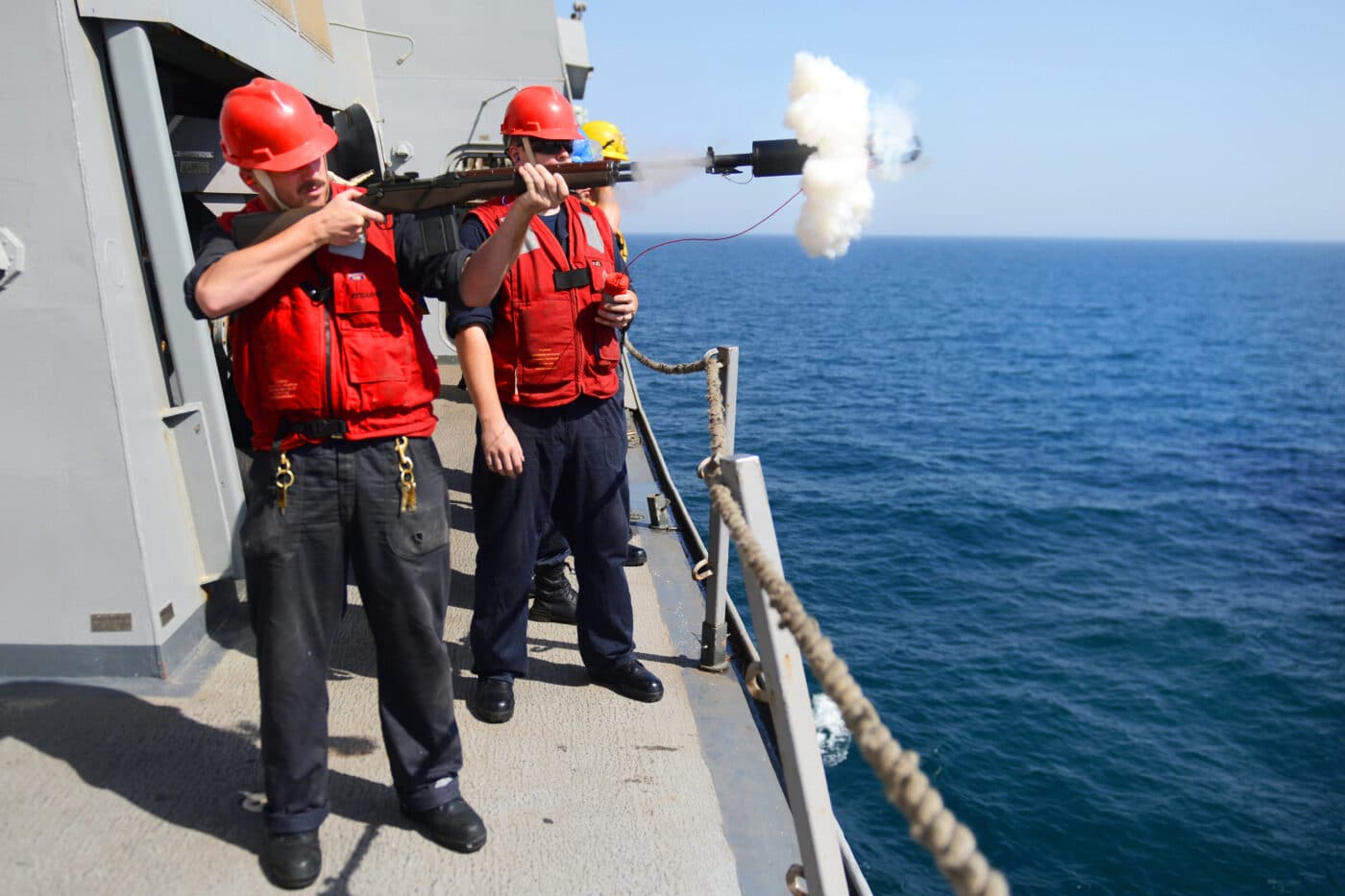
The reusable hard rubber projectile is fitted with a stainless-steel disk in the base, which absorbs the propellant gases and the wadding of the M64 (7.62mm) rifle grenade cartridge. The loop line connects the shot line to the projectile.
The nylon shot line comes in spools that are nearly 550 feet long with a tensile strength of 125 lbs. The line is wound around a wooden spindle in a way to prevent fouling when the projectile is fired. The line is orange colored and water-proofed to be buoyant for at least 24 hours.
Throwing the Line
I talked with a few U.S. Navy men, all gunners, past and present, about this unique form of shooting and their use of the M14 rifle. As with many things in life at sea, there is little preparation for it, and much credit is due to the ingenuity of our military, and the spirit of American marksmanship on land, air, or sea.
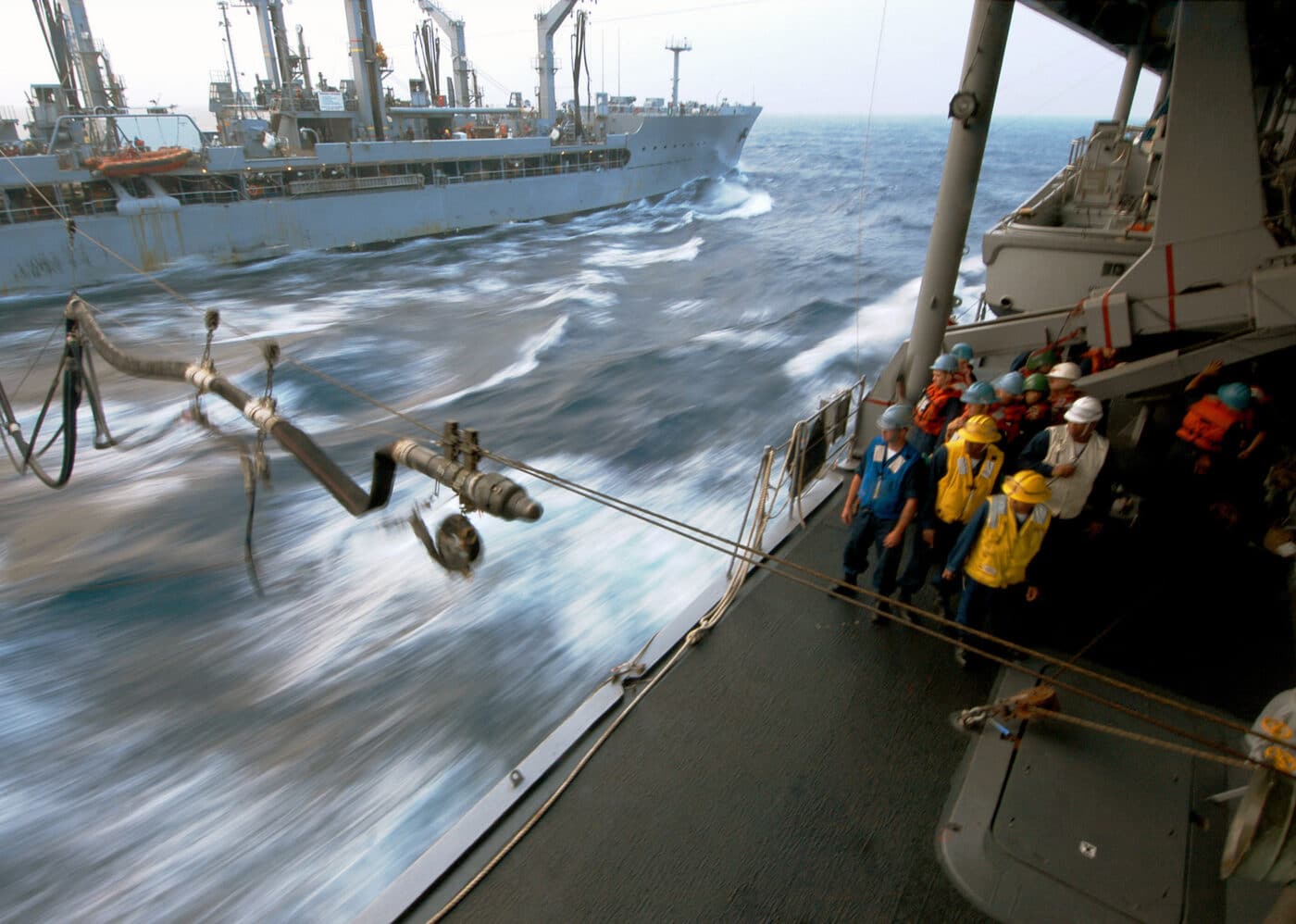
Aboard the USS Yellowstone: “In the North Atlantic in the winter, the winds are often quite high. Throwing a line from one ship to another while underway is all but impossible. That is where the line gunner comes in. I was assigned this duty because I was the new kid on the block, and none of the others wanted to be topside during an UNREP in the North Atlantic during the winter. My training was basically “Here’s the gun, here’s the line and bolo, here’s the attachment, and here are the blanks. Any questions?” I do recall my Master Chief was there the first time I shot. He told me to aim high and forward as the wind passing between the two ships would cause the bolo to drift aft. The higher the wind, the higher the drift. I got the first shot over on my first try. I don’t know if my first shot was pure luck, or if I was a natural. Handling more than 100 UNREPs, I think I only missed three or four times.”
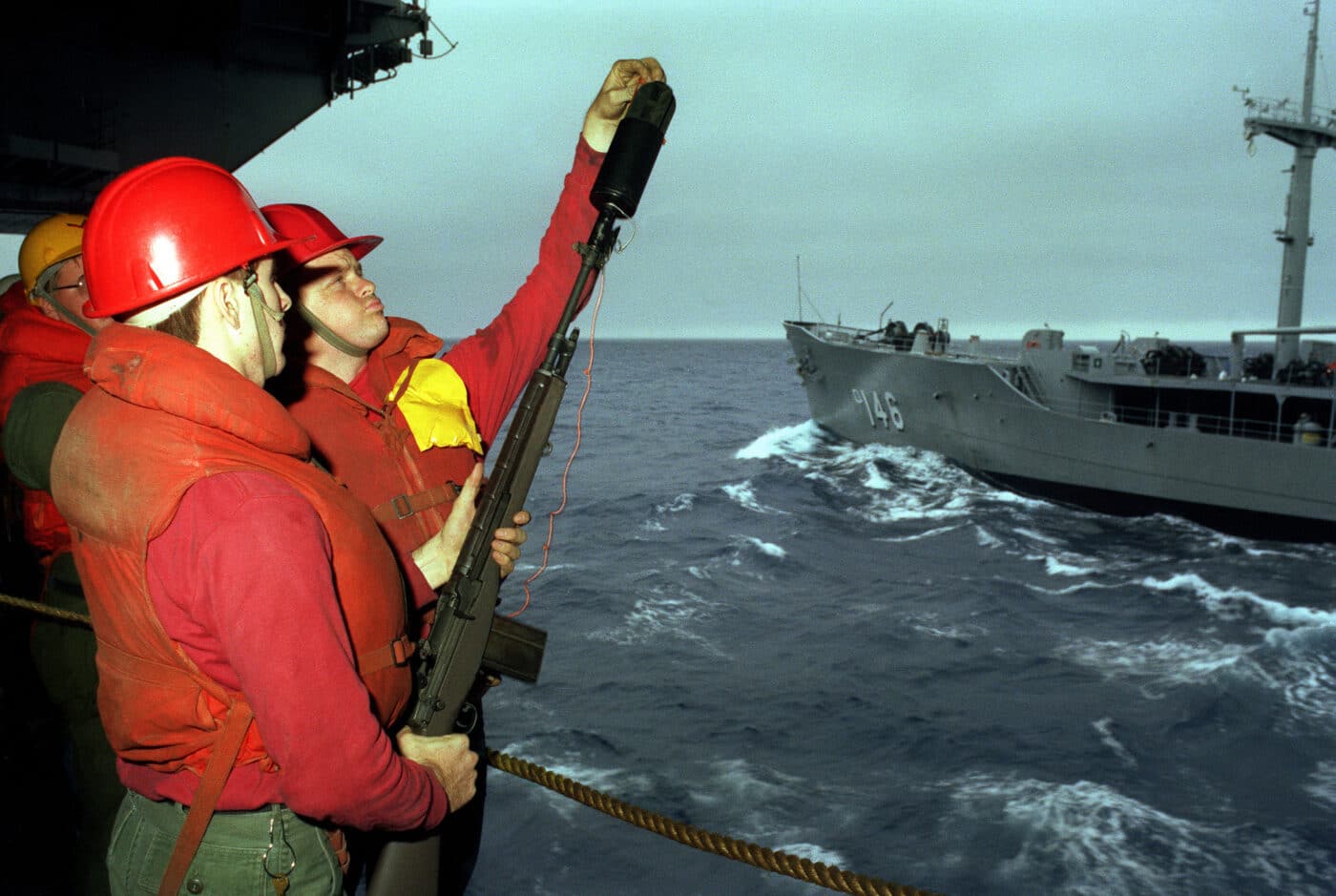
Aboard the USS Curtis Wilbur: “The training is nothing special; mostly on the job. We have to be qualified to shoot the M14 as well as a line gunner, which really just comes with the experience of doing it a couple of times under instruction. The important things to remember are its best to elevate the gun at about a 45-degree angle and offset in the direction to adjust for the wind. The angle is the most important part — shoot too low and the projectile will fall short and into the water; shoot too high and the line can get tangled in the refueling lines. The gunner’s assistant is important too, as they “pinch” the line spool when the projectile lands on deck. If they pinch too soon the line will fall short; if they pinch too late and the projectile can sail over the ship or bounce off the deck into the water.”
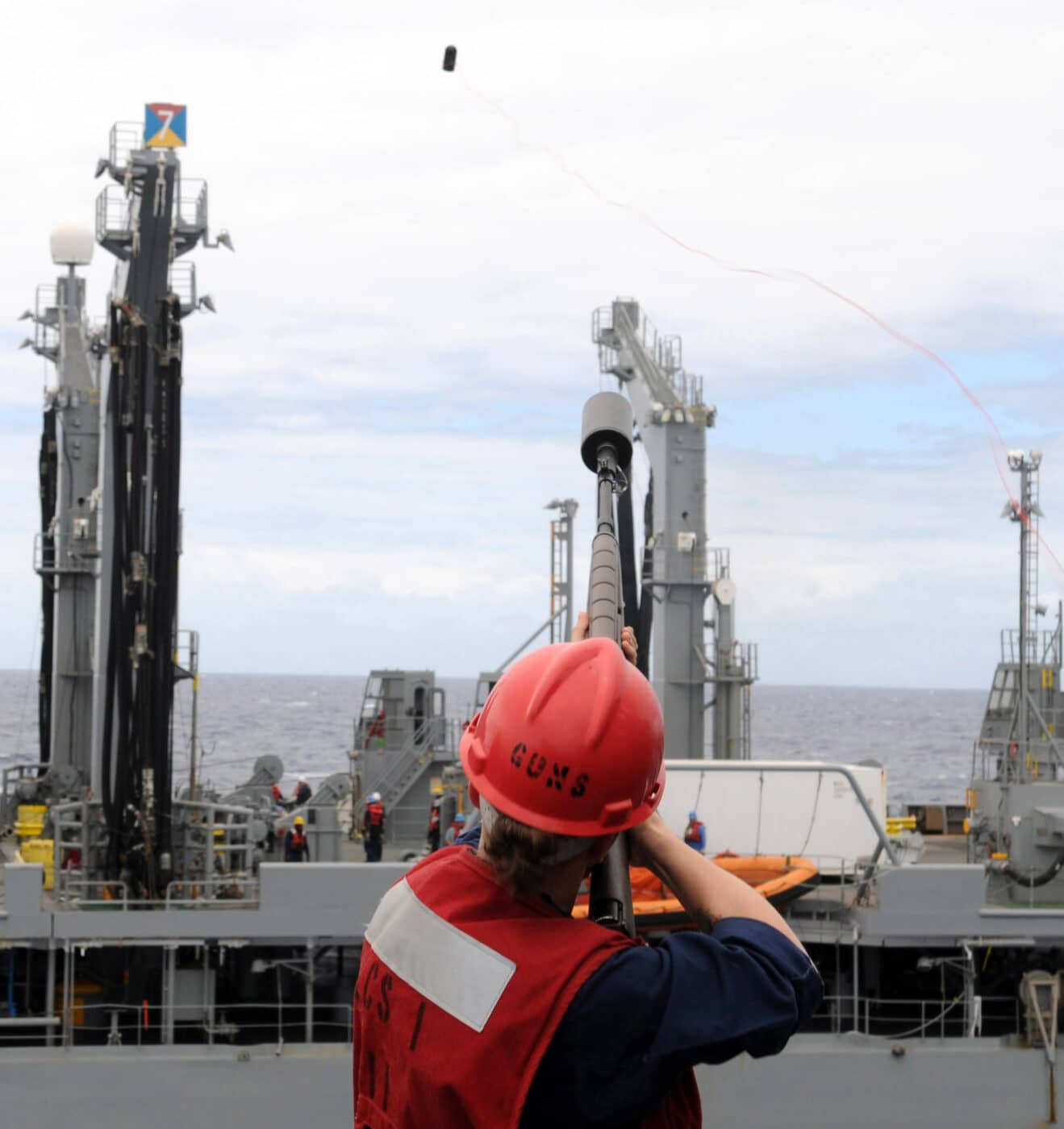
Aboard the USS John F. Kennedy: “Replenishment at sea was always done underway with a supply vessel at a slow, steady speed. To get the supplies from one ship to the other, lines were run across. Before that begins, a line is shot from the receiving ship to the supply ship using an M14, special blank cartridges and a device mounted to the muzzle. The device resembled a soda can and had a spool of line attached to it attached to a hard rubber projectile that was placed in the ‘can’.
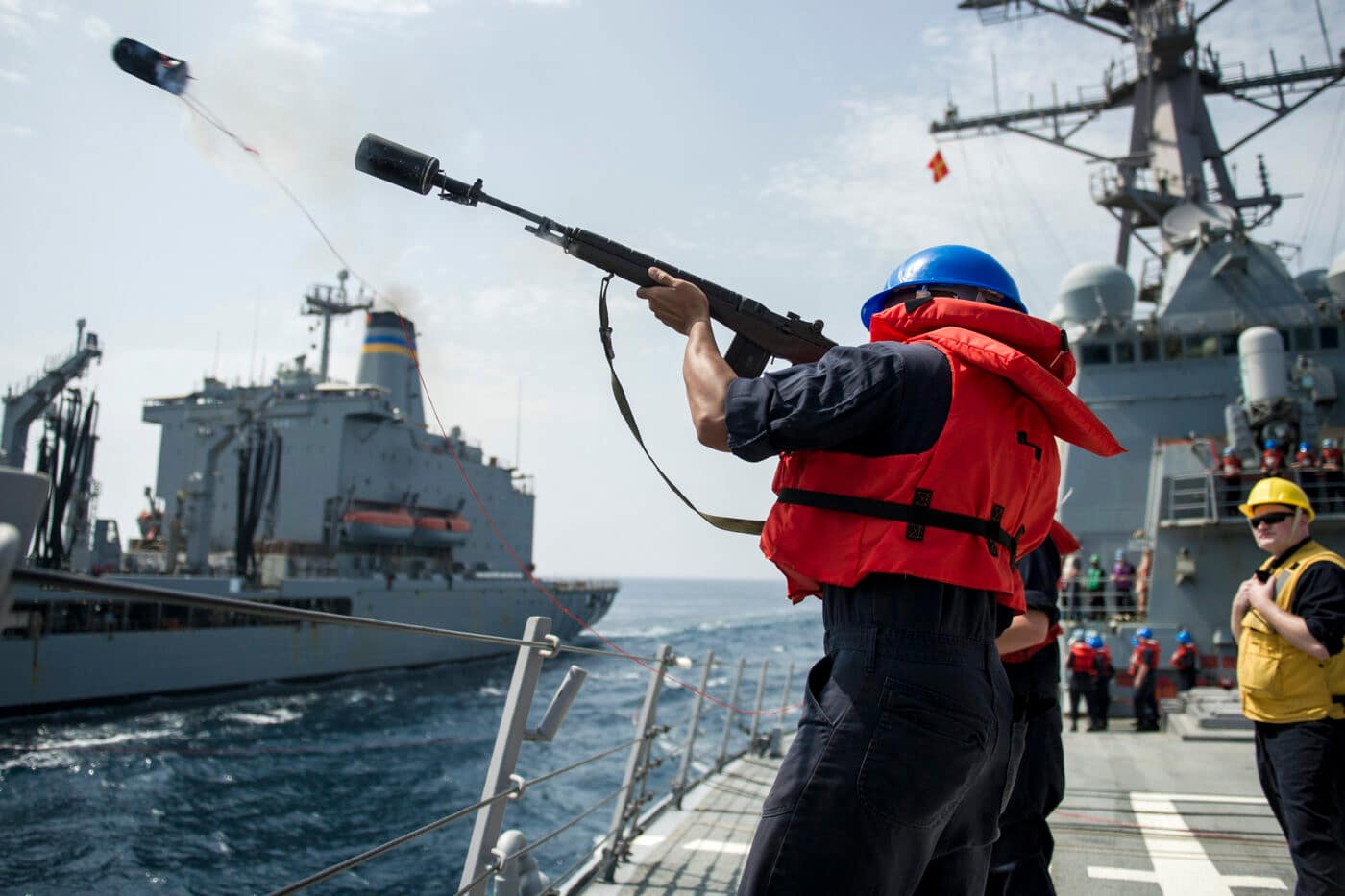
“To shoot the line over, there was really no aiming that I remember. The rubber projectile was heavy enough that a sort of lobbing was used. Knowing the angle to lob the projectile was a guess at best, and the secret was angle versus timing. Usually there were several Gunner’s Mates shooting lines over at one time; seemingly half did not reach the intended location because of variables like wind and the heaving of the ships. On one occasion, I witnessed a projectile hit a Chief in the upper torso or head area and take him down. The entire ship secured from UNREP until the emergency was resolved. The Chief’s condition was so bad that he was transported in a litter across from ship to ship. The Gunner’s Mate who fired the line was extremely distraught, I remember.”
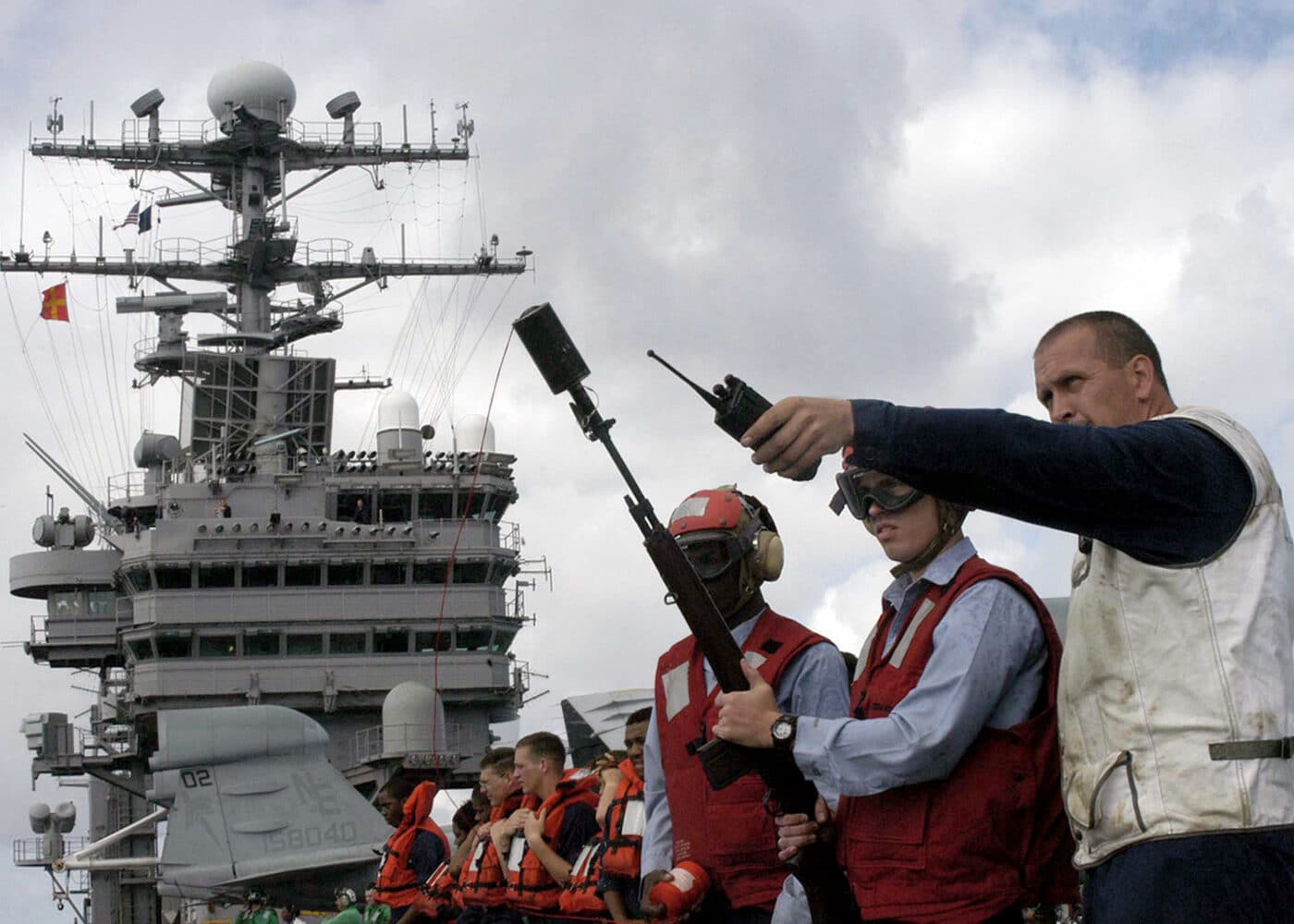
Aboard the USS Iwo Jima: “The shooters were all Gunners Mates, Weaponeers, and our training was strictly on-the-job. Over time, you got the feel for it. While wearing a Mae West you really could not bring the M14 to your shoulder, so I fired it on my arm from just below my bicep or sometimes from my hip. Part of the group waiting on the receiving end presented red paddles, (about twice the size of ping-pong paddles), as the target while the rest of their team waited to grab the projectile and secure the line.”
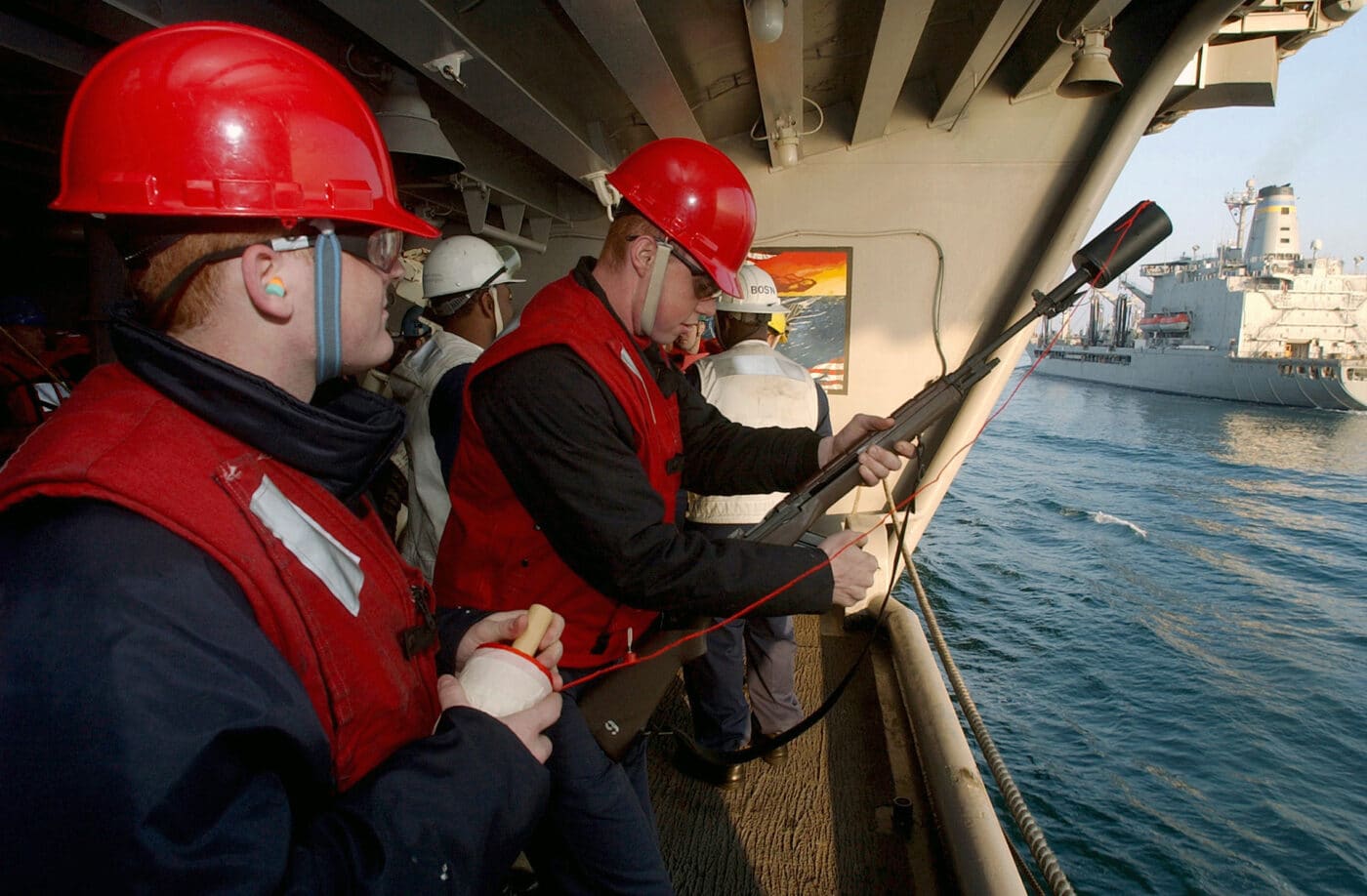
Soldiering On, In the Navy
When the M14 was adopted, the Navy was using a special single-shot (break-action) rifle for line-throwing, chambered in .45-70. In 1958, few would have imagined that the then-new M14 would disappear from the hands of America’s ground troops by 1970, and yet still be in service with the U.S. Navy half a century later.
Editor’s Note: Please be sure to check out The Armory Life Forum, where you can comment about our daily articles, as well as just talk guns and gear. Click the “Go To Forum Thread” link below to jump in and discuss this article and much more!
Join the Discussion
Continue Reading
Did you enjoy this article?

 83
83






